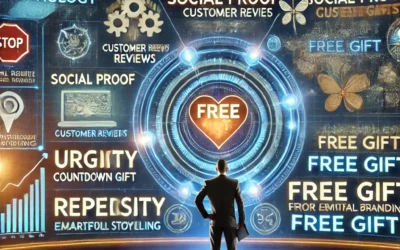In today’s crowded digital space, facts and features aren’t enough to sell a product. What truly captures attention and builds brand loyalty? Storytelling.
Humans are wired to connect with stories. A great story creates emotion, trust, and relatability—turning passive audiences into loyal customers. Let’s dive into how you can use storytelling to elevate your marketing strategy! 🚀
1. Why Storytelling Works in Marketing
Stories engage the brain differently than regular information. Instead of processing data, people experience emotions—making messages more memorable and persuasive.
🔥 Benefits of Storytelling in Marketing:
✔ Creates an emotional connection with your audience
✔ Helps your brand stand out from competitors
✔ Makes complex messages easier to understand
✔ Increases engagement, loyalty, and conversions
📌 Example: Apple doesn’t just sell tech; they tell stories about creativity and innovation. Their ads focus on how products improve lives, not just features.
2. The Key Elements of a Great Marketing Story
A powerful marketing story has three essential components:
🎭 Character: Who is the main character of your story? (Customer, founder, brand, etc.)
⚡ Conflict: What problem are they facing?
🏆 Resolution: How does your product or service solve this problem?
💡 Example: Nike’s “Just Do It” ads don’t focus on shoes—they tell stories of real athletes overcoming challenges, inspiring customers to push their limits.
3. Types of Storytelling for Marketing
🔹 Brand Story (Why You Exist)
Your origin story helps customers connect with your mission and values.
📌 Example: TOMS Shoes’ story about donating a pair for every pair sold builds emotional appeal.
🔹 Customer Success Story (Before & After)
Real testimonials showcase the impact of your product.
📌 Example: Weight loss brands use before-and-after transformations to tell compelling success stories.
🔹 Behind-the-Scenes Story (Authenticity)
Showing raw, behind-the-scenes content makes your brand more relatable and human.
📌 Example: A bakery sharing how they handcraft pastries daily builds trust and connection.
4. How to Use Storytelling in Your Marketing Strategy
🔥 Social Media: Share micro-stories through short videos or carousel posts.
🔥 Email Marketing: Use storytelling in subject lines and email campaigns.
🔥 Website & About Page: Tell your brand’s journey and mission.
🔥 Advertisements: Create emotion-driven video ads that focus on experiences.
🔥 User-Generated Content: Encourage customers to share their own brand experiences.
📌 Example: Airbnb’s “Belong Anywhere” campaign shares real traveler stories, making their platform more than just a booking site—it’s a lifestyle.
5. The Secret to Effective Storytelling: Emotion Over Facts
The best stories evoke emotion, whether it’s excitement, nostalgia, or inspiration. Instead of just listing features, tell a story that makes people feel something.
📌 Example: Coca-Cola’s holiday commercials don’t promote soda—they share heartwarming moments of family, giving, and togetherness.
Final Thoughts
Storytelling isn’t just a marketing tactic—it’s the key to building deep, lasting connections with your audience.
✅ Focus on real, relatable stories
✅ Make your audience feel something
✅ Show how your product changes lives
The brands that tell the best stories win. Will yours be one of them? 🚀




0 Comments